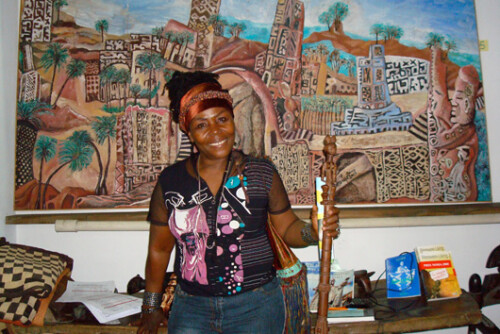Neoliberalism is perhaps now most widely understood within critical interdisciplinary studies in terms of the permeation of the logic of the free market throughout all realms of social and subjective life. Viewed as both: (1) a project instituting market-based norms of practice across the spheres of politics, economics, and culture, the boundaries between which have become almost indeterminate; and (2) a category of periodization of the latest phase of global capitalism; neoliberalism has become largely characterized by—if not considered almost synonymous with—the hegemonic ascent of the defining features, instruments, and operative logics of financialization and post-Fordism. While the protocols of entrepreneurship, investment, speculation, risk management, securitization, and derivatives are seen as reorganizing prevailing modes of value extraction and forms of sociality and subjectivity, all social life is seen as having been converted into a form of productive labor, i.e., as directly productive of expropriable value. Whether as a form of political rationality, an ideology, or a social-cultural logic, neoliberalism has become shorthand for the saturation or “real subsumption” of what was once the superstructural realm of state action and political policy—as well as cultural, personal, intellectual, affective, and even moral and religious life—by the operative principles and abstract forms of market exchange.
Beyond the notions of commodification and consumerism that might have dominated cultural studies’ critiques of everyday life at the end of the twentieth century, and beyond the imperatives of deregulation, privatization, and liberalization that constituted the well-known economic doctrine of the Washington Consensus, neoliberalism signifies the greater role that finance or interest-bearing capital has come to take in the hegemonic social imaginations of the present. Whether it is the generalization of the “enterprise” form as the grid of intelligibility and normative guide for individual life conduct or the naturalization of risk-taking speculation, debt-fueled value creation, and market freedom in spheres beyond the more restricted sphere of economic practice and policy, cultural critiques of neoliberalism have paid significant attention to money as capital and, in particular, finance capital, as a structural principle in the transformations of subjectivity and sociality that neoliberalism designates.
My own inclination is to supplement the global-North-centric focus of such critiques with attention to the uneven times of neoliberalism as a sociocultural logic and a periodizing concept. This perspective brings to view, for example, the phenomenon of the sheer surplusing of human life and the creation of nonsubjects through various policies of expulsion—from full citizenship and from the social commons or from the general intellect of the post-Fordist “social factory” (through formal, informal, state, and civil-society practices of desocialization of excess populations, e.g., new and old forms of racism directed at “illegals” as well as potential “terrorist” social groups).1 This view requires a consideration not of money as capital, but rather of money as coin/cash, as the means and medium of life practices on the part of surplus populations (including the urban excess, rural migrant workers, or floating populations in international cities integrated within the global economy).
Such a view recognizes different operative levels (or moments) and internal complexity within the global capitalist dynamic—even in an era where finance capital dominates the global economy—and works against the tendency to flatten out the very dynamics within which value is created, circulated, transformed, and accumulated (the different circuits and aspects of exchange), and within which different populations figure. Abandoned surplus national populations of the unemployed, for example, are aggregated and monetized into securitized assets by and for their states.2 Rather than assuming the form of interest-bearing capital, the form which the proper neoliberal investor-subject is enjoined to make of his or her individual life, these populations often have to exchange and expend their own lifetimes—not only as a form of soft currency, but also as a currency of diminishing value. The modalities of living that disposable, surplus people are struggling with, in conditions of waste, warehousing, and abandonment (in facilities of detention managed by security industries, or in underground, illicit, and informal economies supplementing more formal industries), call for other critical lenses of legibility besides the articulated forms of neoliberal, free-market doctrines. Rather than burdens of radical individualism and personal responsibility, we see, for example, the skeins of cooperation on which people depend for their survival stretched and manipulated into new configurations, enabling forms of molecular agency and personhood that might escape more macro-level or molar critiques of neoliberal transformations.
Attending to the uneven times of neoliberalism also means attending to other genealogies of neoliberalism, such as those that trace the structural transformations of the 1980s and 1990s to an earlier era, particularly in the case of the Philippines and Brazil, where policies of deregulation, liberalization, and privatization were first carried out in the 1960s, in an era of growing authoritarian state power. It also means contemplating the crisis and possible exhaustion of neoliberalism in present-day Latin America, where left-leaning governments are instituting policies of nationalization and state controls. In these areas, as well as in parts of East and Southeast Asia, where the specter of financial crises in the United States and Europe are inducing crisis-prevention planning, in many ways, the welfare state appears to be in the process of being established for the first time, rather than being dismantled, as in the conventional genealogy of neoliberalism in advanced capitalist economies.
These uneven times of neoliberalism importantly impact the way the question of justice might be raised. Under the “constitutional authoritarianism” of the Marcos dictatorship in the Philippines which inaugurated many features of neoliberalist restructuring from the late 1960s to the early 1980s, “justice” was dispensed by the legal apparatuses of the patriarchal military-state (while “people’s justice” was counterposed by an armed revolutionary movement). With the restoration of elite democracy, extra-judicial punishment became state policy, authorized by an open global trend in “security” launched by the US-led “war on terror”. This broad movement from legal to extralegal measures of state justice may, however, hide a murkier picture of long-standing informal structures of adjudication and redress in everyday life, particularly among surplus populations who have long borne the greatest costs of the economic inequity created and worsened by globalization and financialization. Insofar as the forms of participation of the Philippine economy in regional and global economies have always been gendered (from the state-sponsored prostitution economy under Marcos to the feminized labor-export economy continuing into the present), it is not surprising to find the imaginations of justice taking very particular, gendered forms.
In Brillante Mendoza’s 2009 film, Lola, (Grandmother) two widowed old women living in the slums of Metro Manila struggle to find justice and redemption for the suddenly curtailed lives of their grandsons—one killed by the other in a cell phone mugging: one dead, the other locked away.3 The film patiently, painstakingly follows as one grandmother struggles to pool resources to give her dead grandson a proper burial, while the other grandmother struggles to find the resources to gain her incarcerated grandson’s release from prison. Rather than a court battle between contending rights culminating in an act of moral-legal judgment as the central event of the narrative (the narrative structure of crime and punishment, or injury/infraction and redress, that is a key ideological-political principle of punitive, liberal-democratic societies), it is the repercussions of the act of violence on those vitally connected to the individuals brought into fatal conflict that we are called to witness and attend to. As we follow each grandmother picking through her scant sources of livelihood for extra money, beseeching neighbors, kin, and benefactors for small donations and loans, pawning every petty asset, withdrawing the meager pensions and savings they had managed to put away, advancing their own future lifetimes and the future lifetimes of others to settle the debts that their respective grandsons’ death and life have incurred, we feel the toll of seeking justice in a social context of daily injustice and hardship, where acts and forces of offense and injury on human life abound. Indeed, as both grandmothers embark on their personally and physically arduous itineraries of ignominious, small-time exchanges in their efforts to piece together and remake their already fractured lives, the seeming opposition between them and their endeavors increasingly blurs, such that the settlement that they arrive at in the end becomes less a squaring of accounts (although money is exchanged) than an act of sympathy and mutual help in the continuing travail of life-making that is their shared fate.
The imagination of justice that Lola offers is one in which the pursuit of justice is inseparable from the gendered work of life-making; indeed, the making of other lives is part and parcel of the making of one’s own. Although the grandmothers first confront each other in the chambers of a judge, the pathways to the moment of “justice” that they eventually find exist outside and on the periphery of the formal halls of state justice (and the prisons, through which informal economies of survival are policed and contained, and the inequalities of economic exchange are reinforced) as the pathways of renewing and remaking social lives. When they finally sit down together for the settlement, it is in a noisy food court, and what they exchange—besides the kerchief-bundled cash unceremoniously passed across the table—are stories of the aches and pains of aging and of their own survival (including outliving their husbands, the “stubbornness” of whom, one grandmother quips, is also a cause of premature death).
There is nothing utopian in this imagination of “justice.” On the contrary, the settlement reached is nothing more than a continuation of what takes place in the everyday life of disposable people: the exchange of life for life. But this rendering of what is, in fact, a common practice among people for whom the justice promised by the state is beyond costly—that is, an aggravation of the injustices they experience in daily life, a further exaction in a life of exactions—suggests that the forms of sociality on which disposable populations depend, the practices of social reproduction as forms of caring and mutual help, might also give rise to the potential for transforming and thinking differently about the protocols of neoliberalist life.
- For a full argument of this point, see Nerfeti Tadiar, “Life-Times in Fate-Playing,” South Atlantic Quarterly, 111.4 (2012): 783-802. [↩]
- See Nerfeti Tadiar, “Life-Times of Disposability within Global Neoliberalism,” Social Text 31.2 (2013): 19-48. [↩]
- Brillante Mendoza, Lola, 2009. Screenplay by Linda Casimiro. [↩]




